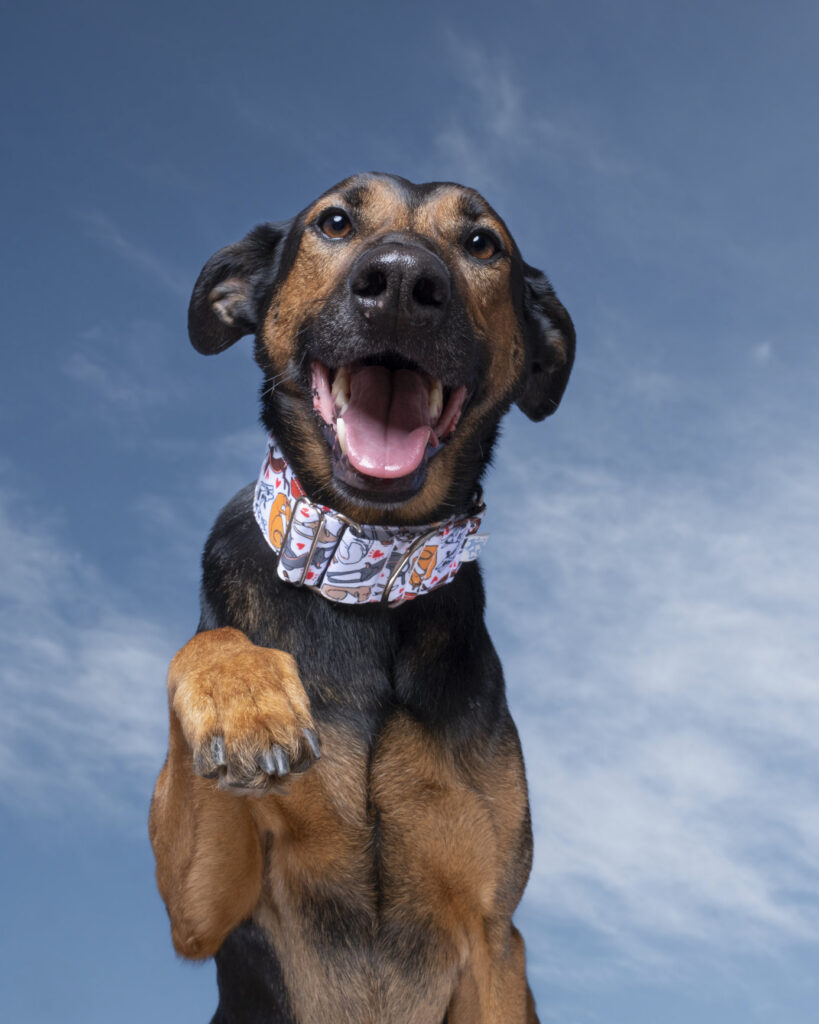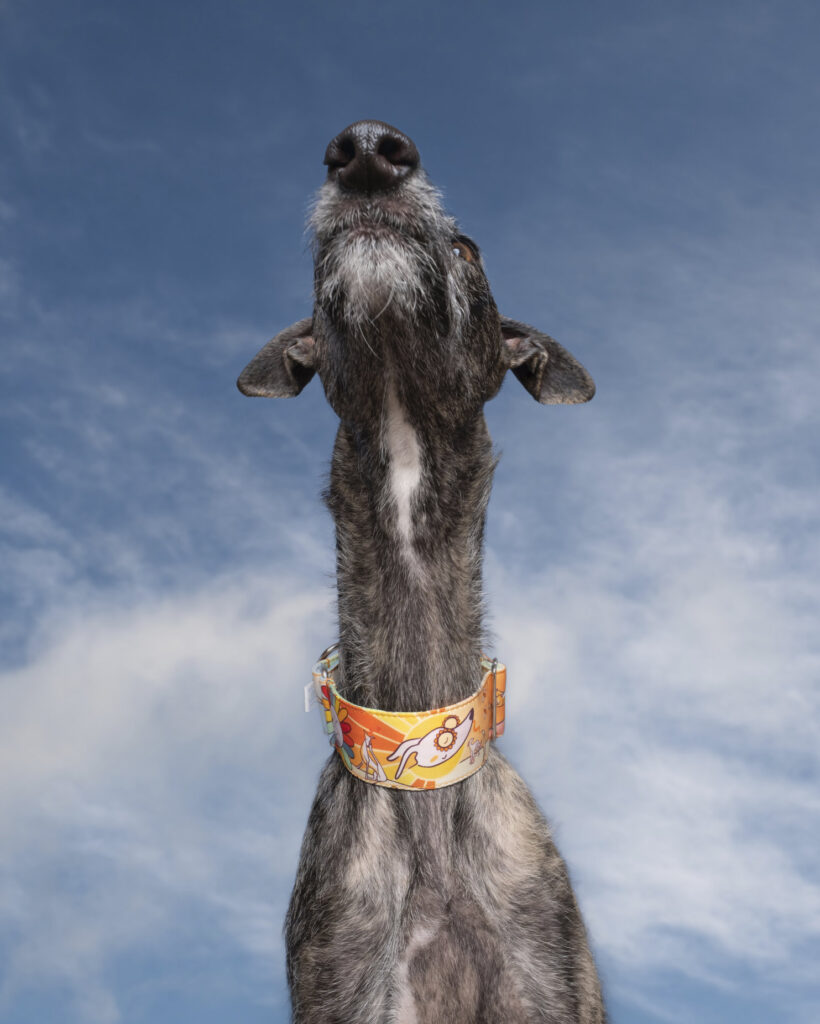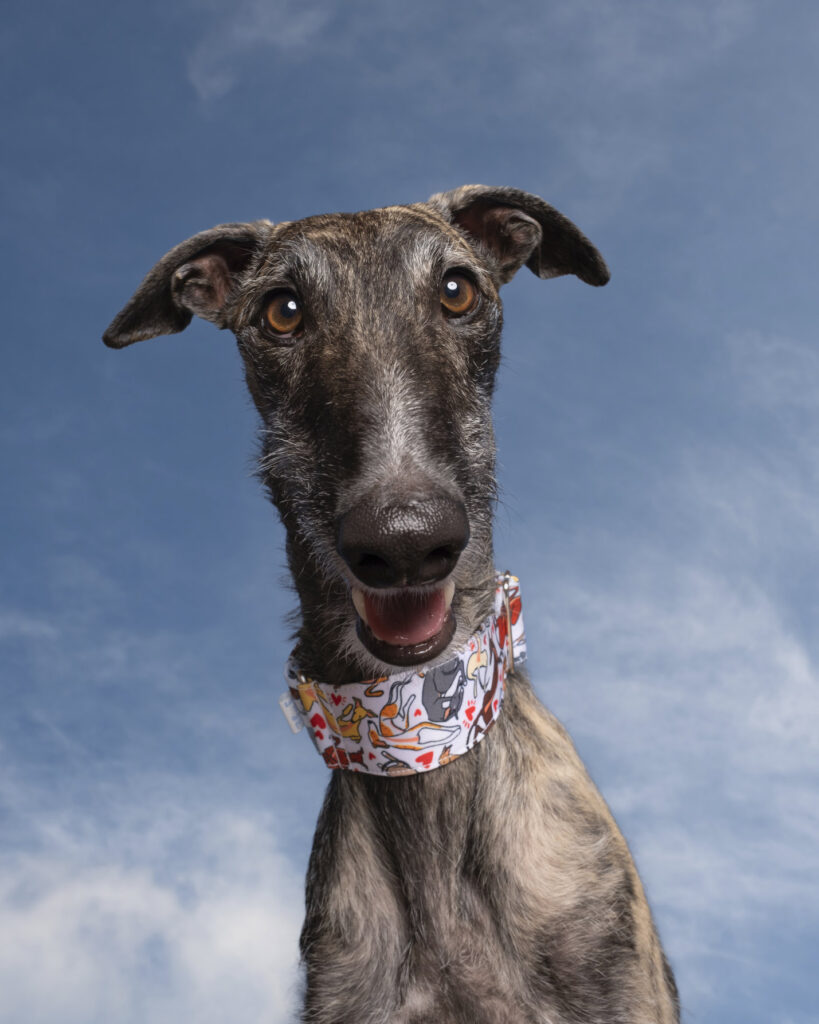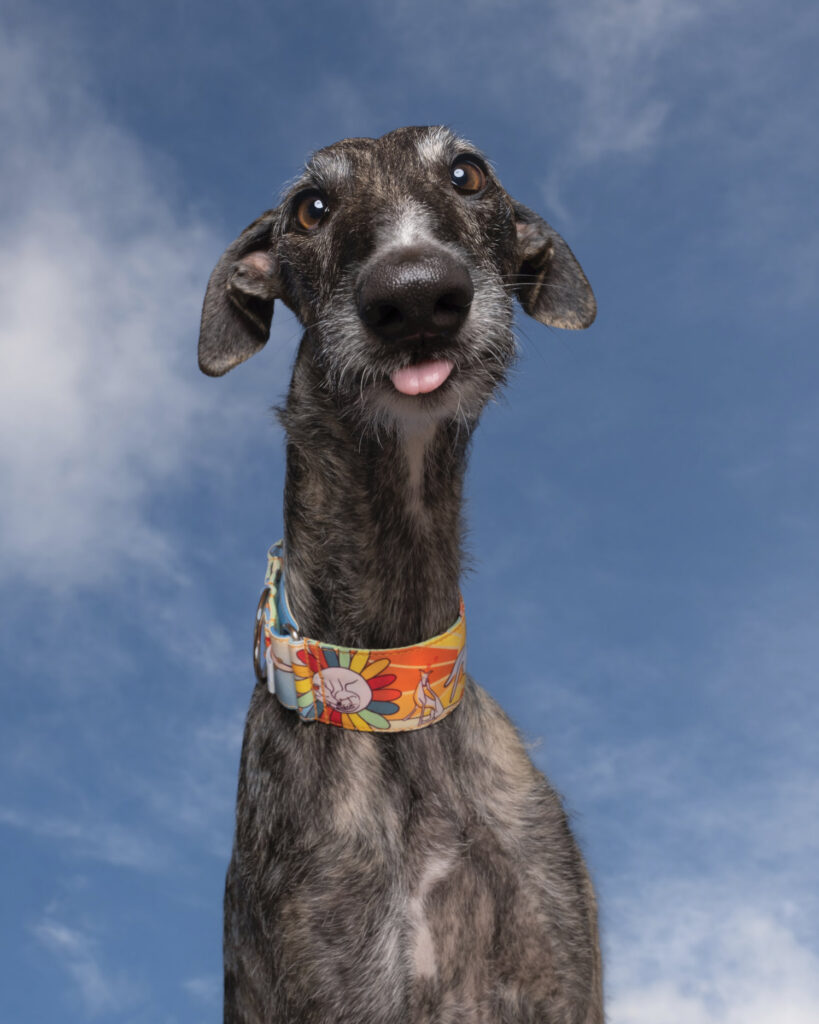We have had the opportunity to speak with Elke Vogelsang, this German photographer who manages to photograph a multitude of expressions in pets. Dogs being the protagonists of many curious images.
At El Galgo Azul we couldn't pass up the opportunity to collaborate with her and with the Benjamin Mehnert Foundation donating the 10% of the benefits of Martinagle necklaces and he portable beds until the end of this month of July.
But not before taking the opportunity to meet this impressive artist and her experience photographing such endearing scenes:
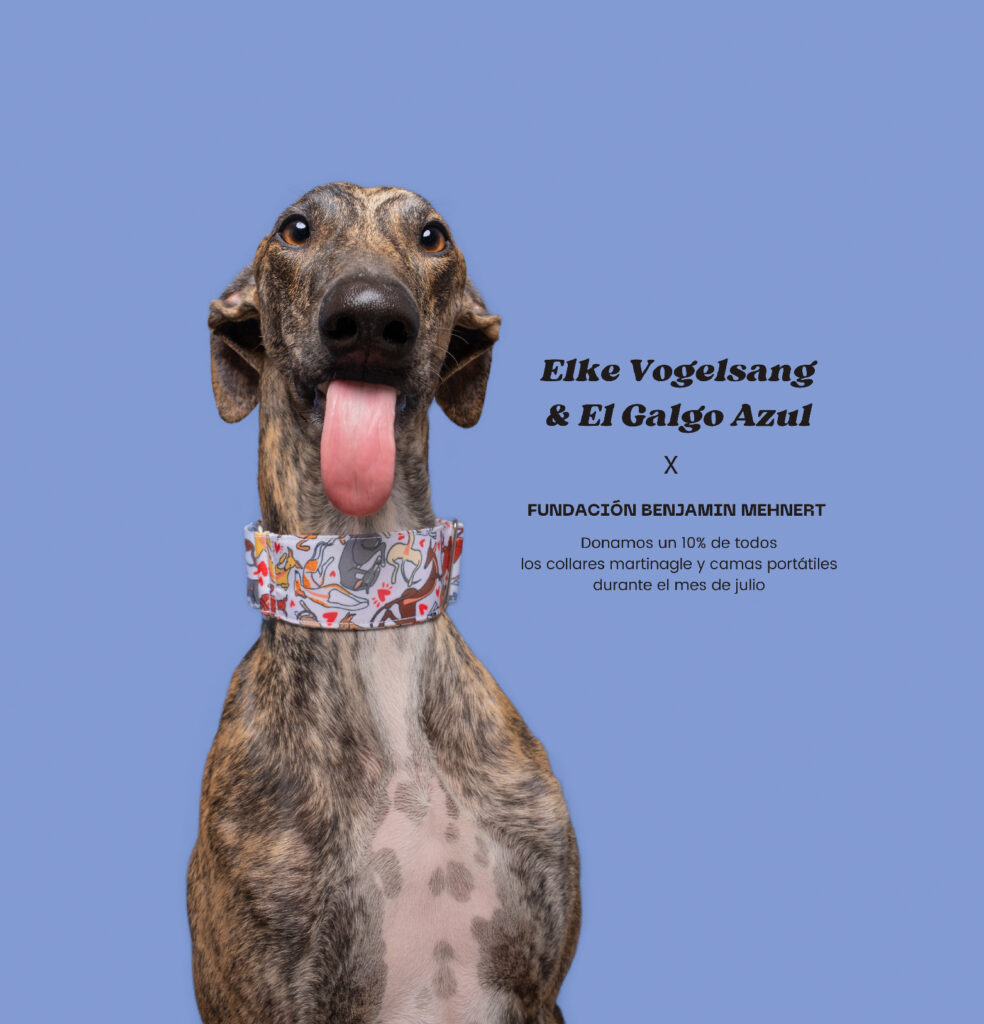
-What led you to dedicate yourself to pet photography?
My obsession with photography began when my husband, Carsten, became seriously ill. On Christmas Day 2009 the dogs (in those days I only had Noodles and Scout, two Spanish Greyhound mixes) suddenly started barking and howling. When they ran to the bathroom door, I found Carsten unconscious. carsten was taken to the hospital immediately. They told me they would initiate an induced coma. The diagnosis was a severe cerebral hemorrhage due to a ruptured aneurysm.
The following months were marked by shaky uncertainty. Contrary to the expectations of the doctors, he had survived. We had gotten over this hurdle, but still no one could tell me if I would be able to recover or lead a normal life again.
I'm glad I had my family, my friends, our dogs (who were even more affectionate than usual in those days) and photography to distract me in those moments. I perfectly remember the day Carsten started to remember things. We were lucky and luck came to us in the form of three watchdogswonderful doctors and my husband's amazing recuperative power.
The best way to highlight your skills is to practice as often as you can. I couldn't stop taking photos, even when my husband came home. With other sick family members to care for, stress continued to play a large part in our lives.
Photography had become something akin to therapy. Since my subjects were still mainly our dogs, more and more people asked me if I could also photograph their dogs.
Dramatic events make you think about life and what you would like to make of it. My job as a freelance translator was safe and worked well, but it wasn't exciting or creative. I felt stuck in the routine and in a boring job. So I dared to take the plunge and turn my hobby into my profession. Now, a few years later, I am successfully working full-time as a professional photographer and couldn't be happier with my decision.


– We see that you have photographed all kinds of dogs, is there any breed that gives you more play?
I love all kinds of hunting dogs. They are intelligent, sensitive and like to work with humans. Easier to photograph are pointing dogs, such as vizslas, Weimaraners, and spaniels. They are very intelligent and very obedient. Greyhounds or podencos, for example, are not so easy because they are more independent and many times they are dogs that come from shelters with a more difficult history. They may be shy and not be as confident in themselves. However, they are my favorite breeds.
– How long does it take you to take one of those famous photographs? How do you get the dog to pose for the photo? Do you work in a studio?
I'm known for my studio images but I also shoot outdoors. During a session I shoot a large number of takes but only use a selection of about ten shots per session in the studio. The photos are very similar and there is always one photo that is better than others. I like to put the focus on the dog's expression and only the funniest or most interesting expression is worth editing and presenting to the world.


– Now together with the Foundation Benjamin Mehnert You promote a solidarity campaign to collect donations for those terribly abandoned dogs, what led you to start this collaboration?
If you could help a little with my photos that would be great. The Benjamin Mehnert Foundation does tremendous work for the abandoned.
My dogs were rescued from the street.
They are my joy, my recreation, my constant source of laughter. They are muses, friends and members of my family. All three are rescue dogs. But one man's trash is another man's treasure. And they are my treasures.
There are still some stereotypes and misconceptions about shelter dogs. When talking about shelter dogs, many people assume that something must be wrong for a dog to end up in a shelter. But animals are abandoned for various reasons, for example, the owner has died; descended from an unwanted litter; the animal has had to be removed from a harmful environment due to a negligent or abusive owner. The owners had no idea of the responsibility that comes with it; they had to move apartments and were not allowed to bring pets; dogs were used as useful animals and due to injury or age could no longer perform as expected, etc.
Even dogs that have suffered massive abuse often have remarkable resilience. With patience and care, they are often able to trust humans again. Well-run shelters will give interested individuals the opportunity to meet the potential new family member and discuss whether the pet is a good fit for the proposed environment and situation. There are adorable dogs of many breeds looking for homes at shelters, including puppies and purebreds. Sure, people can find their next canine friend and family member at a local shelter or through a rescue organization like the Benjamin Mehnert Foundation.
– At the time you decided to foster 3 wonderful dogs, why did you decide to adopt a dog?
My family has always had dogs. When I decided that I wanted to adopt a dog, my husband was not enthusiastic. I had never had anything to do with dogs. So I was looking for a particularly friendly dog. I found it in Noodles, a crossbreed greyhound from an animal shelter in Spain. Noodles adored everything and everyone. And she made my husband love dogs. Two more dogs arrived, also stray dogs. All three are wonderful family members.


